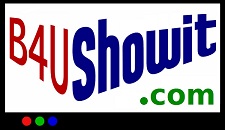
Oh, the USB key! Both the savior and bane of my AV existence. When I started working with computer presentations, as a part of live events, I would get last minute PowerPoint updates on floppy disks and CD's, with only a small handful of presenters who were savvy enough to carry USB keys. Clearly, those savvy presenters were a sign of what was to follow.
Once upon a time when data projectors with 800 x 600 native resolution ruled the day, having floppies and CDR's to upload data was somewhat precarious, and hot-swapping PC computers with 15-pin VGA cables was a recipe for disaster.

As we entered the age of the highly portable USB key, 64 MB beat floppies and 128 MB was a luxury for some. As things progressed, storage increased dramatically, prices plummeted, USB2 picked up speed (punny!) and audio-video files for playback became commonplace. Oh, what a wonderful, digital world! Or, is it?
Having these fast-loading hot-swappable little memory banks is necessary for the fast-paced world of live events, but they can also be and excuse for being unprepared! Since presenters can keep making countless updates, it is a very simple matter to hand over a USB key to an AV technician to load onto a host computer, unless the technician gets five at once with no labels, unclear file names (and hierarchy), font changes, .pptx files, missing PowerPoint images, unlinked AV files and the list goes on.

The technology has gotten smarter and faster, but it can also be a crutch when half a dozen presenters leave everything until the last minute and thus, to chance. The newer technology doesn't matter when the planning has been compromised and results in details falling through the cracks or the wrong presentations appearing on a huge projection screen.
With that all being said, here are some great tips for presenters and meeting planners who are a part of all-day events with multiple presentations:
1) Avoid interrupting anybody who is actively loading and double checking a presentation. Instead, develop a system* for updates and last-minute presentations with an AV control sheet and sticky notes, or little Zip-lock (tm) baggies with presenters names marked on them. Nothing should be left to memory.
2) Ensure all media files on the USB key are linked to the presentation software. The presentation file and the media files should be in the same folder, usually located on the desktop for easier access. If the media files won't play, start the presentation from the USB key directly, plan a workaround so the technician can assist in the playback manually.
3) Ensure all the files are sensibly named on the USB key and put into a folder that makes sense when someone else is looking for it.
4) Bring a USB extension cable if your key is wider than average or it won't fit into the USB port with other peripheral devices beside it.
5) Label the outside of the key or put it in a labeled envelope (or baggie) with first and last name, and name of the file.
6) If the USB key is password protected, make arrangements for someone else to open it when they need to.
Hope these tips help you to experience a smooth conference or other business meeting!
Buck Moore,
B4UShowit.com
* One such system I developed involves numbering preloaded presentations for every presenter. If presenter #1 and #4 have preloaded presentations on a host computer (or master USB key), but #2 and #3 bring theirs on the day of the event, the numbering order should be the following:
Presenter #1 - 1
presenter #2 - 1a
presenter #3 - 1b
presenter #4 - 2
Both the AV sheet and the computer files should be re-named with the numbering system as the prefix for each. That way, they will show up in numerical order and can be located quickly and tracked as to when they were received. If the first presenter of the day did not have a pre-loaded presentation, but brings on the day of the event, the should be numbered "01", so the order is always right.
.
 The beauty of the USB key is obvious - presenters can make last minute changes and bring their presentation to a host computer last minute (but, with virtually no time to check it out to make sure it works).
The beauty of the USB key is obvious - presenters can make last minute changes and bring their presentation to a host computer last minute (but, with virtually no time to check it out to make sure it works).







